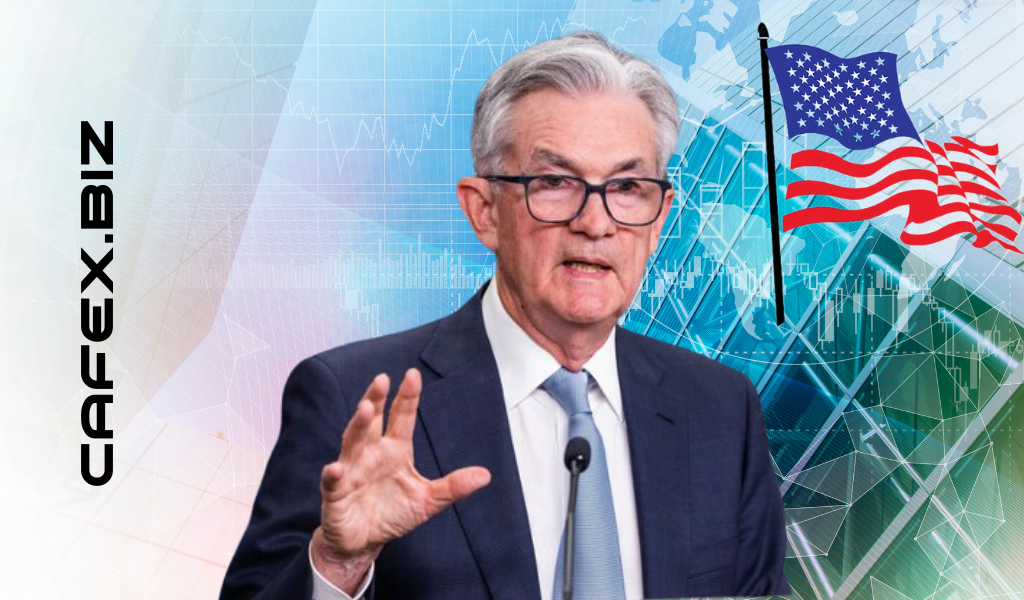On Wednesday, the United States Federal Reserve made a decision to keep its key interest rates steady, maintaining them at the highest levels in 22 years, ranging between 5.25% and 5.50%. These interest rates have remained at this level since July, marking the highest they've been since 2001. This prolonged pause began in late July, but it doesn't rule out the possibility of future interest rate increases in the coming months.
This marks the second consecutive meeting where Federal Reserve officials expressed their satisfaction with maintaining the Fed's basic interest rate. The Federal Reserve's target interest rate remains within the range of 5.25% to 5.5%.
The central bank has been increasing the costs associated with borrowing in an effort to cool down the economy and curb inflation, which is the rate at which prices are rising. This decision comes after recent data revealed that the U.S. economy is experiencing faster growth than initially anticipated.
Increasing interest rates is a tool that central banks can use to combat inflation. In simple terms, by raising interest rates and making borrowing more expensive, consumers tend to spend less, which in turn leads to slower increases in prices.
The Federal Reserve has faced criticism, with some arguing that keeping interest rates higher could potentially push the U.S. economy into a recession. However, the economy has been performing better than expected, with a growth rate of 4.9% from July to September. This is a significant improvement from the previous three months, driven by a tightening job market and increased consumer spending.

In a statement on Wednesday, the Federal Reserve made it clear that the decision to keep interest rates unchanged received unanimous support. They also stated that they are prepared to adjust their policies "as needed" if new risks emerge.
Jerome Powell, Chairman of the U.S. central bank, emphasized that it is important to manage the process of increasing interest rates.
The Federal Reserve's decision to maintain interest rates unchanged is an approach that allows them time to "evaluate additional information" about the state of the economy.
Chairman Jerome Powell explained that the positive recent economic data is just the beginning of building confidence that inflation is moving toward its target. He acknowledges that there's still a "long road ahead" and that high inflation causes "hardship" as it erodes consumers' purchasing power.
Powell mentioned that the previous interest rate hikes have impacted communities and businesses, but the rate of price increases remains well above the target.
This suggests that the central bank might delay any reduction in interest rates, as inflation is currently at 3.7% in the U.S., which is still significantly higher than the Federal Reserve's 2% target.
Independent U.S. economist Peter Jankovskis stated that the decision to keep interest rates unchanged is "not surprising" and "won't have an immediate impact on the stock market." He also pointed out that "long-term bond yields are increasing," which is an important indicator of how investors perceive the strength of the U.S. economy.
Chairman Powell also noted that there are "important issues" that central banks need to consider. He mentioned that "global political tensions are escalating, including the situation in Ukraine," and added that the Federal Reserve is keeping a close watch on the Israel-Gaza situation due to its "economic effects" and is proceeding with caution in light of global risks.
Jankovskis concluded by saying, "It seems that the Fed is recognizing a strong economy and is focused on whether further interest rate increases are necessary. This theme will remain high for some time."
In many economies, higher borrowing costs have led to higher loan costs for businesses, housing, and other goods and services. This signals the end of the era of low-interest rates.
Despite the Federal Reserve's efforts to control rising prices by gradually increasing interest rates, the U.S. economy has continued to grow at an annual rate of 4.9% from July to September, according to official data released last week. This robust growth has been driven by strong consumer spending, and the initial estimate for the third quarter of Gross Domestic Product showed the fastest growth in about two years.
In mid-October, the Labor Department reported that core inflation, which excludes volatile food and energy prices, had risen by 4.1% in September compared to a year earlier. However, this marks the slowest rate of increase in two years.
Since March 2022, the Federal Reserve has gradually increased the benchmark interest rate from nearly 0%. At the time of the September policy meeting, the Federal Reserve's forecasts indicated that they anticipate another interest rate hike before the end of 2023.
Economists and investors are closely monitoring for indications of whether the upcoming months will bring the 12th interest rate hike in the central bank's tightening cycle.
Chairman Powell stated on Wednesday that the "journey to bring inflation down to a sustainable 2% is still a long one."

